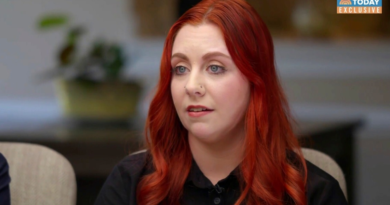The American shopper's toothpaste choices are trying to tell us something about inflation—and that long-predicted recession
Americans are cutting back on personal hygiene products in a troubling sign for the US economy and consumer-focused companies.
Despite surging inflation, shoppers kept spending thanks to income gains and government stimulus. But those benefits are waning, and now Americans are skimping, even on everyday items such as toilet paper and toothpaste. More insights on the economic environment come on Wednesday with the release June’s consumer price index. That measure is anticipated to show annual inflation slowed to 3.1%, its lowest level since March 2021.
“The strains that the consumer is under have been exacerbated over the last couple of months,” said Morningstar analyst Erin Lash. The reduction of food assistance programs, lower tax returns and using up extra savings and stimulus funds have an impact, she said.
Take Hollie Ernst, a single mother of two daughters from Oak Park, Illinois. Still facing rising costs, including a looming rent increase on her two-bedroom apartment, the 48-year-old recently stopped buying shaving cream — soap will have to do — and traded down to cheaper Colgate toothpaste from Crest, made by Procter & Gamble Co. She also cut out Aveeno lotion, so now her family moisturizes with Vaseline, a Unilever Plc brand.
“Cash doesn’t stretch as far as it used to,” said Ernst, who is an event coordinator at a law firm. Even with her spending cuts, she still had to use a credit card to make ends meet. “I just accepted that’s the way it is.”
May’s consumer spending report showed that inflation-adjusted household outlays for all goods and services have essentially stalled after a surge early this year.
Personal-hygiene products, including staples, have taken a hit, according to NIQ, which tracks purchases at US retailers. Units sold of toothpaste, laundry detergent and toilet paper are down around 3%-4% in the 52 weeks through June 24. To be sure, some products are being used less at home as Americans return to work and travel.
This sets up a tough remainder of the year for consumer-goods companies and retailers, which begin reporting their latest quarterly results in a few weeks. Their stocks have trailed the S&P 500 this year, and now their ability to keep raising prices and gloss up their income statements looks like it won’t work much longer.
At Procter & Gamble, shipment volumes have declined for the past four quarters. Same goes for rival Kimberly-Clark Corp., which said earlier this year that it expects price increases to subside in 2023 as consumers shift to less-expensive store brands.
“You need to find a new way to grow your business other than price because consumers are getting tapped out,” said NIQ’s Carman Allison. “More people are living paycheck to paycheck.”
Meanwhile, there are more signs of stress in the consumer economy, with shoppers relying more on credit cards as excess savings dwindle. Delinquency rates are on the rise, too.
“People are just saying, ‘I’m going to buy less because it’s gotten too expensive,’” said Mike Leiser, chief transformation officer and senior partner at consultant Prophet.
In retail, consumers often trade down to cheaper stores during tough economic times, and that looks like it played out in the second quarter.
Target Corp. undercuts department stores and specialty chains on price, but its transactions still sank 7.2% from April to June, compared to the same period a year ago, according to Bloomberg Second Measure, which analyzes credit and debit card data. That’s by far the retailer’s biggest quarterly decline of the pandemic. Meanwhile, purchases at Walmart Inc. and Dollar General Corp. rose 3.7% and 6%, respectively.
“We’re in a very precarious position,” Leiser said. “Not only the health of the consumer, but the health of the economy.”
–With assistance from Reade Pickert.




